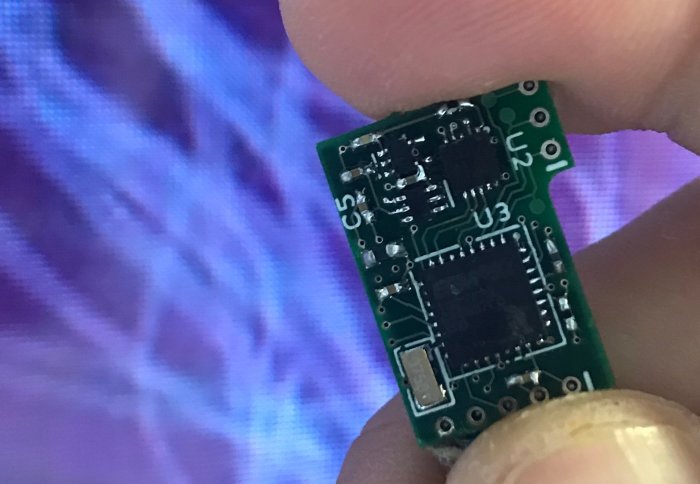New wireless device can aid recovery of breast cancer patients

A new sensing device can provide early warning of potential failure of breast reconstruction surgery, making it easier to take effective action.
An international team led by Imperial College London and funded by the Engineering and Physical Sciences Research Council (EPSRC) have developed the wireless ‘bio-patch’ as part of the Smart Sensing for Surgery project.
Incorporating electronics measuring just 1.8 x 1.1cm, the bio-patch was attached to patients for 48 hours following breast reconstruction surgery. It successfully performed continuous monitoring of the level of oxygen saturation in transferred tissue – a key indicator of whether there is a risk of reconstruction failure.
Early warning system
Professor Guang-Zhong Yang, Director of Imperial’s Hamlyn Centre, leads the Smart Sensing for Surgery project. He said: “Poor blood supply or failure of breast reconstruction surgery can have a major impact on a breast cancer patient’s recovery, prognosis and mental wellbeing. Clinical signs of failure often occur late and patients may be returned to the operating room on clinical suspicion.
“Our new bio-patch tackles this problem by providing objective data as an early warning system for medical staff, enabling earlier and simpler interventions, as well as giving patients increased peace of mind.”
Breast reconstruction surgery following a mastectomy routinely includes transfer of the patient’s own tissue to help rebuild the breast. This procedure achieves high success rates but early detection of possible problems could help to further reduce post-surgical complications and cut surgery failure rates.
Data capture and transmissions
Harnessing a technique known as near-infrared spectroscopy (NIRS), the new device safely captures and transmits data using sensors sealed inside fully biocompatible materials. The data is encrypted to ensure security and privacy.
Early trials have opened up the prospect of the bio-patch becoming available for widespread clinical use within 2-3 years. The project team is currently exploring the scope to secure commercial or National Institute for Health Research (NIHR) support for the next stage of development and commercialisation.
The device is now being adapted to help monitor conditions such as dementia and chronic obstructive pulmonary disease (COPD).
Smart solutions
Professor Yang added: “The Smart Sensing for Surgery project is an excellent example of how engineers and clinicians can come together to develop ‘smart’ solutions that have huge potential not just to enhance patient health and wellbeing but also to help reduce the burden on healthcare resources.”
Smart Sensing for Surgery has achieved other promising advances, including development of sensors that can be implanted just under the skin to provide continuous measurement of pulse rate, temperature and pH balance, and development of ‘smart’ catheters or drains enabling problems (e.g. relating to infection) to be spotted early on.
The EPSRC-funded project Smart Sensing for Surgery ran from June 2014 to October 2018 and received just over £3 million in EPSRC support.
Image credit: Szasz-Fabian Jozsef on Shutterstock.
Article supporters
Article text (excluding photos or graphics) © Imperial College London.
Photos and graphics subject to third party copyright used with permission or © Imperial College London.
Reporter
Joanna Wilson
Communications Division